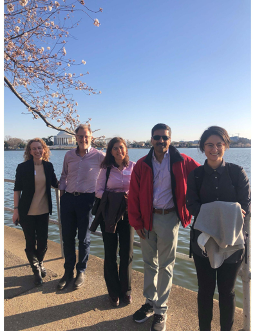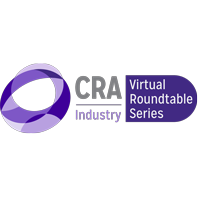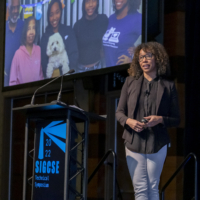Best Practices on Using the Cloud for Computing Research Workshop
 The Computing Research Association‘s newest committee, Computing Research Association-Industry, held their first workshop at the end of March on Best Practices on Using the Cloud for Computing Research. It brought together 30 participants in a hybrid format in Washington, DC from industry, academia, and government. This workshop was based off of a very successful September 2021 roundtable event, in which over 50 members of the community attended. The goal of the workshop was to continue the momentum from the roundtable and identify best practices on using the cloud to enhance computing research. Discussions focused on three different areas: research, collaboration, and education/workforce development.
The Computing Research Association‘s newest committee, Computing Research Association-Industry, held their first workshop at the end of March on Best Practices on Using the Cloud for Computing Research. It brought together 30 participants in a hybrid format in Washington, DC from industry, academia, and government. This workshop was based off of a very successful September 2021 roundtable event, in which over 50 members of the community attended. The goal of the workshop was to continue the momentum from the roundtable and identify best practices on using the cloud to enhance computing research. Discussions focused on three different areas: research, collaboration, and education/workforce development.
The cloud has forever changed how computing research is performed. Research methods will have to change, rather than having the cloud conform to current research methods. Data is being shared at a greater rate than ever before. The participants agreed that these changes should be embraced and encouraged. The public clouds should be leveraged. With the expansion of cloud computing, there will be heterogeneity of requirements and resources that different clouds will specialize in. These should be embraced, since requirements vary due to the nature of research. A single cloud will not meet the needs of all. A hybrid cloud or multiple cloud idea is promising, but given the nature of data and the great expansion that all fields are going at, it will not be enough.
Cutting-edge collaborative research in many domains is impossible without access to large datasets found in the cloud. These include healthcare data, large code repositories, large language repositories, scientific datasets, etc. Participants talked about how collaborations in the cloud can enhance research by performing data analysis and computations tasks, which in turn reduces redundancy. It is important to share these interactions to facilitate subsequent research and new discoveries. This is also true for collaborations around code. There are many examples of commercial, academic, and government open source code contributions that relate to cloud computing. Finally, collaborative services, such as Google Scholar, GitHub, Globus, Overleaf, GradeScope, are not only convenient but allow the research community to grow. More collaborative resources should be incentivized and hopefully developed.
Finally, it is clear that there are multiple opportunities related to education and the cloud. On the one hand, the cloud can be used to enhance education, and on the other, there is an urgent need for educators to prepare the future workforce for careers in a cloud-centric industry. The workshop participants talked about how the cloud is a democratizer since it makes an experience uniform and equal among students in a classroom. During the height of the COVID-19 pandemic, the cloud enabled education to continue via hybrid and/or remote modes. It allowed for easy collaboration among students and gave access to specialized resources that may not be available at many educational institutions. The continued adoption of the cloud in classes at the institutional level will provide better scale and sustainable support over the long term for multiple types of applications and uses (virtual desktops, VMs, cloud services). At the same time, there is a major gap between the cloud-related skills needed in the 21st century and the computing foundations currently taught in academia. As a result, academia should provide incentives for faculty to develop cloud-related courses, industry should provide course development grants related to cloud computing, and the government should continue to support cloud-based curriculum development.
More details from the workshop will be shared in the forthcoming report. Please keep an eye on the website. If you are interested in participating in future CRA-Industry events, please let us know.









